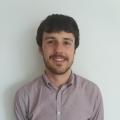
Seven areas in Southend have seen a sharp rise in coronavirus cases in the past week.
It comes as the borough is now recording the highest number of weekly infections in south Essex.
There were 466 new coronavirus cases in Southend in the week ending September 30 – that’s 77 more than the week ending September 23.
Although some areas such as Belfairs, Leigh and Thorpe Bay have seen a drop in infections, others have seen a sharp rise.
Below are seven areas where cases have risen significantly in the week ending September 30 and their current localised infection rates per 100,000 people:
- West Leigh 34 new cases (up78%)
Infection rate: 359.4
- Eastwood Park – 32 new cases (up 45%)
Infection rate: 339.5
- Blenheim Park – 36 new cases (up 111%)
Infection rate: 322.6
- Victoria – 51 new cases (up 54%)
Infection rate: 391.6
- Southend Central – 26 new cases (up 100%)
Infection rate: 221.1
- Kursaal – 36 new cases (up 80%)
Infection rate: 294.7
- Southchurch – 39 new cases (up 143%)
Infection rate: 390.9
It comes as new analysis has found the rate of Covid-19 reinfections “remains low”.
When people do get infected for a second time, the virus is much less likely to cause serious illness, according to the Office for National Statistics (ONS).
Reinfections become more likely as time goes on, the analysis suggested. It also highlighted how some people are more likely to be reinfected than others.
Kara Steel, senior statistician for the Covid-19 Infection Survey, said: “The analysis shows that the estimated number of Covid-19 reinfections in the UK remains low.
“It’s also encouraging to see that when reinfections do occur, generally they are less likely to cause serious illness.
“This is likely due to high levels of antibodies as a result of natural immunity and vaccination, giving protection against the virus.”
The ONS examined data on people taking part in its Covid-19 study.
Researchers looked at information on 20,262 participants who were deemed to be “at risk of reinfection” – participants were deemed as such if 120 days had lapsed since their original infection or those who had four negative tests following original infection.
A total of 296 cases of reinfection were identified.
Of these, around 137 people were deemed to have a higher viral load.



Comments: Our rules
We want our comments to be a lively and valuable part of our community - a place where readers can debate and engage with the most important local issues. The ability to comment on our stories is a privilege, not a right, however, and that privilege may be withdrawn if it is abused or misused.
Please report any comments that break our rules.
Read the rules hereLast Updated:
Report this comment Cancel